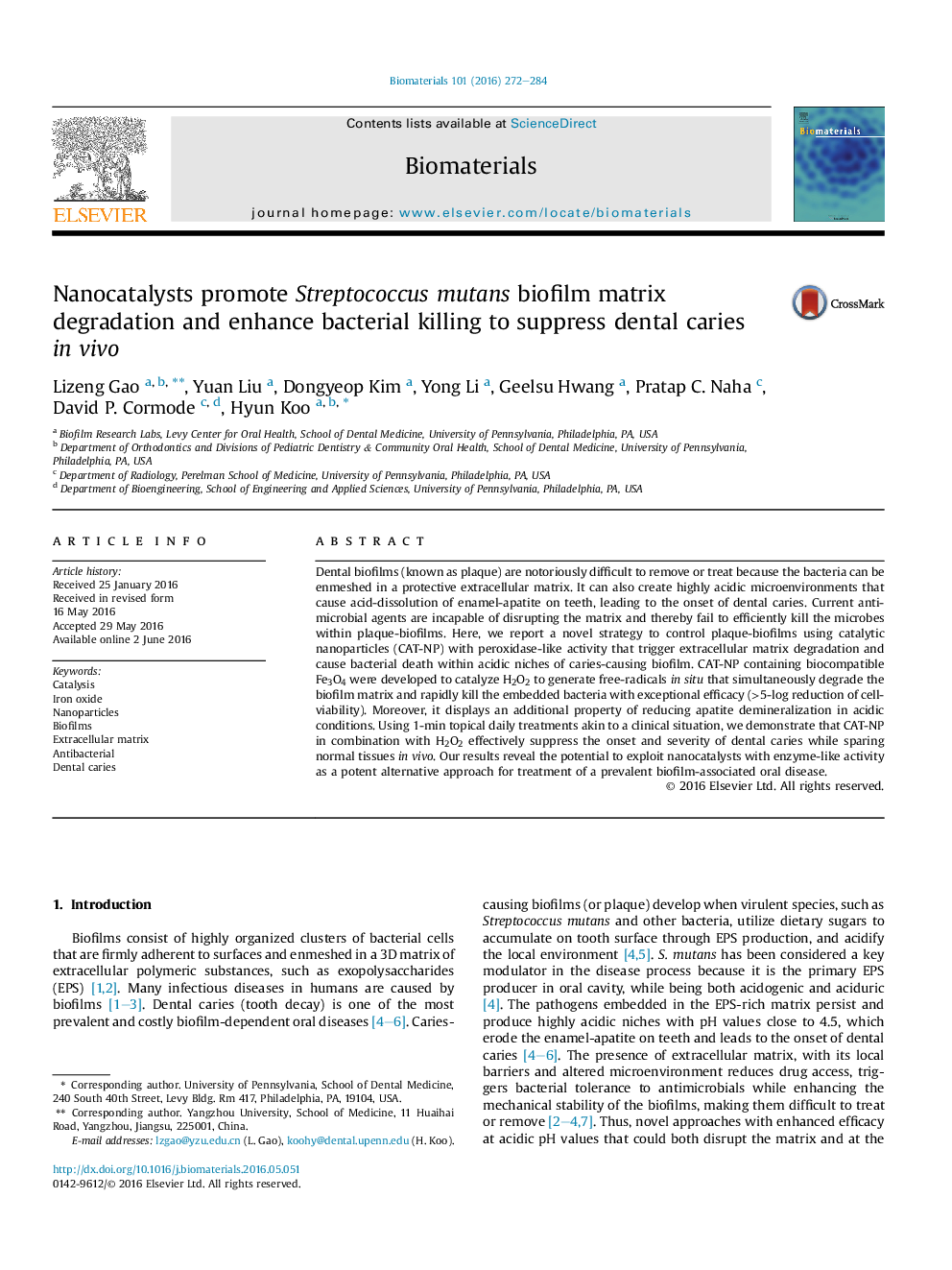| Article ID | Journal | Published Year | Pages | File Type |
|---|---|---|---|---|
| 5356 | Biomaterials | 2016 | 13 Pages |
Dental biofilms (known as plaque) are notoriously difficult to remove or treat because the bacteria can be enmeshed in a protective extracellular matrix. It can also create highly acidic microenvironments that cause acid-dissolution of enamel-apatite on teeth, leading to the onset of dental caries. Current antimicrobial agents are incapable of disrupting the matrix and thereby fail to efficiently kill the microbes within plaque-biofilms. Here, we report a novel strategy to control plaque-biofilms using catalytic nanoparticles (CAT-NP) with peroxidase-like activity that trigger extracellular matrix degradation and cause bacterial death within acidic niches of caries-causing biofilm. CAT-NP containing biocompatible Fe3O4 were developed to catalyze H2O2 to generate free-radicals in situ that simultaneously degrade the biofilm matrix and rapidly kill the embedded bacteria with exceptional efficacy (>5-log reduction of cell-viability). Moreover, it displays an additional property of reducing apatite demineralization in acidic conditions. Using 1-min topical daily treatments akin to a clinical situation, we demonstrate that CAT-NP in combination with H2O2 effectively suppress the onset and severity of dental caries while sparing normal tissues in vivo. Our results reveal the potential to exploit nanocatalysts with enzyme-like activity as a potent alternative approach for treatment of a prevalent biofilm-associated oral disease.
